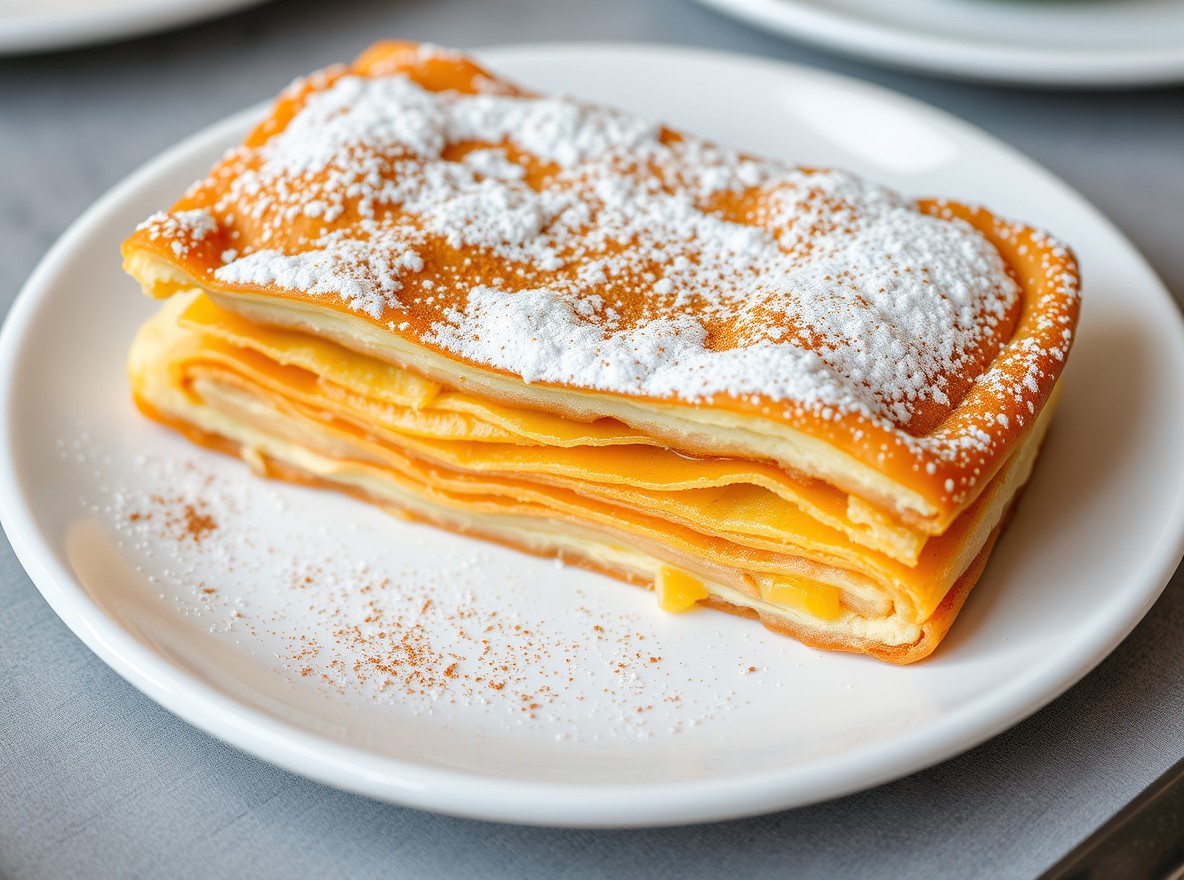Introduction
Pastilla, also known as B’stilla, is one of Morocco’s most renowned dishes, blending savory and sweet flavors in a uniquely layered pastry. Traditionally made with pigeon meat but now commonly prepared with chicken or seafood, this flaky pie is a must-try for anyone exploring Moroccan cuisine. What makes Pastilla so special is its harmonious mix of textures and flavors—crispy warqa pastry, spiced meat, and a dusting of cinnamon and powdered sugar.


History & Cultural Significance
Pastilla’s origins trace back to Andalusia, brought to Morocco by Muslim refugees fleeing Spain during the 15th century. Over time, it evolved into a staple of Moroccan royal cuisine, often served at weddings, feasts, and special occasions. This dish represents Morocco’s rich culinary heritage, showcasing its fusion of Arab, Berber, and Moorish influences.
Ingredients & Regional Variations
The classic Pastilla consists of:
-
Protein: Traditionally pigeon, but often substituted with chicken or seafood.
-
Spices: Saffron, cinnamon, ginger, turmeric, and white pepper.
-
Almonds: Blanched, toasted, and ground with sugar and orange blossom water.
-
Eggs: Used to thicken the filling.
-
Warqa pastry: A thin, crispy Moroccan dough similar to phyllo.
Regional Variations:
-
Fes-style Pastilla: Stays true to tradition with pigeon meat.
-
Seafood Pastilla (Tetouan & Rabat): Uses shrimp, squid, and fish with a creamy sauce.
-
Modern Versions: Some chefs incorporate lamb or even vegetarian options.
Cooking Process & Difficulty Level

Making Pastilla is moderate to expert-level, requiring time and patience.
step-by-step guide:
Prepare the filling: Cook the meat with spices and onions.
Thicken with eggs: Stir in beaten eggs to create a rich texture.
Prepare almonds: Toast and grind them with sugar and orange blossom water.
Layer the pastry: Arrange warqa sheets, alternating layers of filling and almonds.
Bake: Brush with butter, bake until golden, and dust with sugar & cinnamon.
Where to Eat Pastilla in Morocco
For the best Pastilla in Morocco, visit:
Dar Yacout (Marrakech) – A fine-dining experience in an authentic riad.
Café Clock (Fes) – Famous for its creative takes on Moroccan classics.
Le Saveur du Palais (Casablanca) – A hidden gem for traditional Pastilla.
Street Food Stalls in Chefchaouen – Affordable, local-style Pastilla.
Pairing with Drinks & Side Dishes
Drinks: Best enjoyed with Moroccan mint tea, fresh orange juice, or light white wine.
Side Dishes: Served with Zaalouk (smoky eggplant dip) or a light Moroccan salad.
Fun Facts & Lesser-Known Trivia
Pastilla is sometimes called “the dish of sultans” due to its historical royal status.
Some variations exist in Algeria and Tunisia, inspired by Moroccan cuisine.
The seafood version is a popular delicacy during Moroccan coastal celebrations.
Health Benefits & Nutrition
Protein-rich: Good for muscle health.
High in healthy fats: Almonds provide essential nutrients.
Can be adapted for dietary needs: Keto, gluten-free (with alternative pastry), or vegetarian versions are possible.
How to Cook It at Home (Simple Recipe)
Ingredients:
500g chicken (or pigeon)
1 onion, chopped
2 tbsp olive oil
1 tsp each of cinnamon, turmeric, ginger, and white pepper
1 cup blanched almonds, ground with 2 tbsp sugar
3 eggs, beaten
8 sheets of warqa or phyllo dough
1/2 cup melted butter
Powdered sugar & cinnamon for garnish
Instructions:
Sauté onions, chicken, and spices in olive oil until tender.
Remove chicken, shred it, and return to pan with eggs.
Toast almonds, mix with sugar, and set aside.
Layer warqa sheets in a baking dish, alternating with filling and almonds.
Fold pastry over, brush with butter, and bake at 180°C (350°F) for 25-30 minutes.
Sprinkle with powdered sugar and cinnamon before serving.
Global Influence & Fusion Cuisine
Pastilla’s concept has inspired fusion dishes worldwide:
French chefs have reimagined it with foie gras.
Some Spanish versions add chorizo or seafood.
In the United States, Pastilla flavors have been adapted into savory hand pies.
Comparison with Similar Dishes
Moroccan Briouates: Small, triangular pastries with similar fillings.
Turkish Börek: Another layered, savory pastry with different fillings.
Greek Spanakopita: Uses phyllo dough but features spinach and feta.

